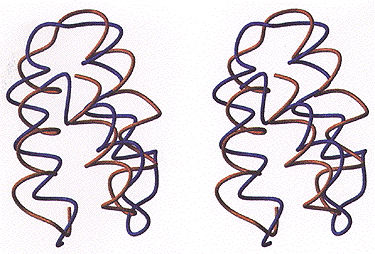
Abstract Volume 101 Issue 1-3 (1999) pp 16-20
DOI 10.1007/s002149800m67
Adam Liwo (1)(2), Jaroslaw Pillardy (2), Rajmund Kazmierkiewicz (1), Ryszard
J. Wawak (2), Malgorzata Groth (1), Cezary Czaplewski (1), Stanisaw Oldziej (1),
Harold A. Scheraga (2)
(1) Faculty of Chemistry, University of Gdansk, ul. Sobieskiego 18, 80-952
Gdansk, Poland
(2) Baker Laboratory of Chemistry and Chemical Biology, Cornell University,
Ithaca, NY 14853-1301, USA
Received: 24 April 1998 / Accepted: 4 August 1998 / Published online: 2 November 1998
Abstract. A united-residue model of polypeptide chains developed in our laboratories with united side-chains and united peptide groups as interaction sites is presented. The model is designed to work in continuous space; hence efficient global-optimization methods can be applied. In this work, we adopted the distance-scaling method that is based on continuous deformation of the original rugged energy hypersurface to obtain a smoothed surface. The method has been applied successfully to predict the structures of simple motifs, such as the three-helix bundle structure of the 10-58 fragment of staphylococcal protein A in de novo folding simulations and more complicated motifs in inverse-folding simulations.
Key words: Protein structure prediction · Mean-field potential · United-residue representation of polypeptide chains · Global optimization
